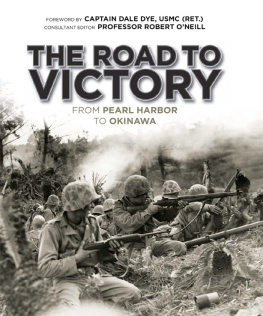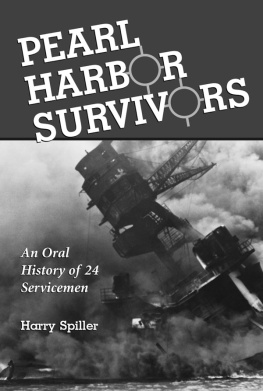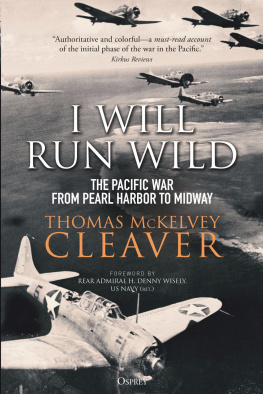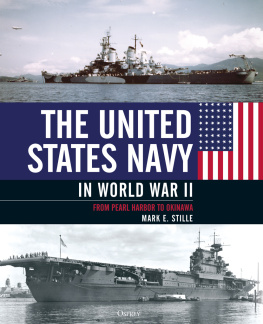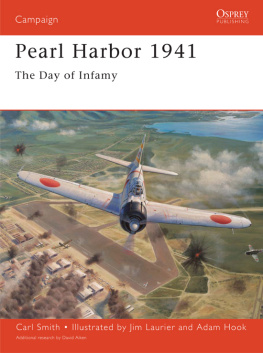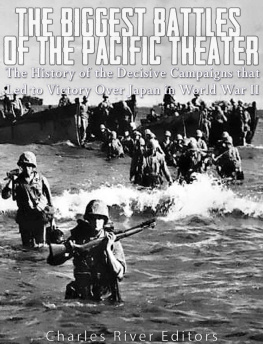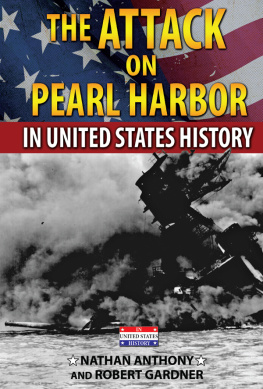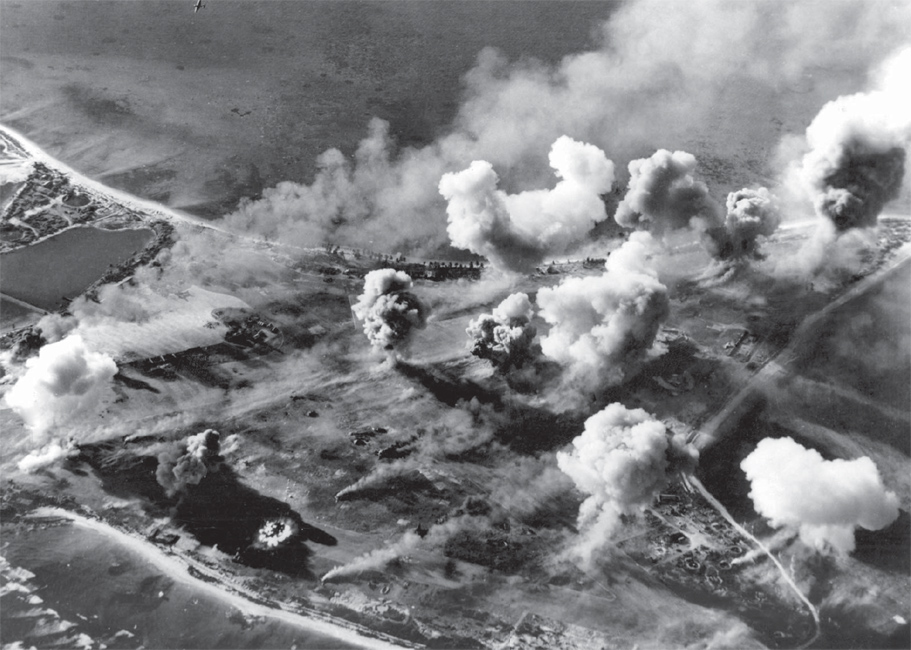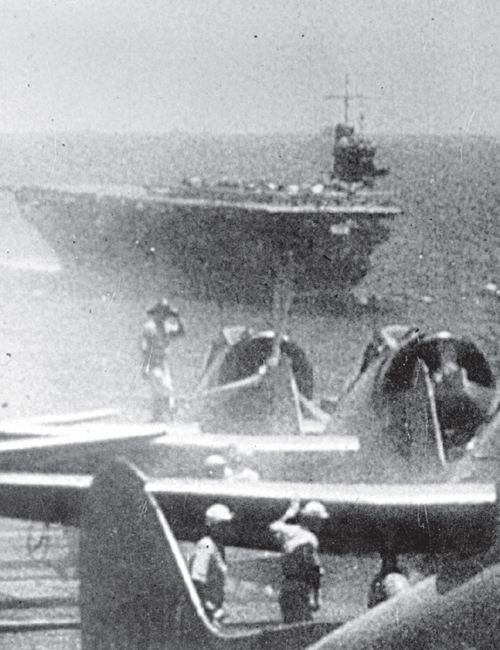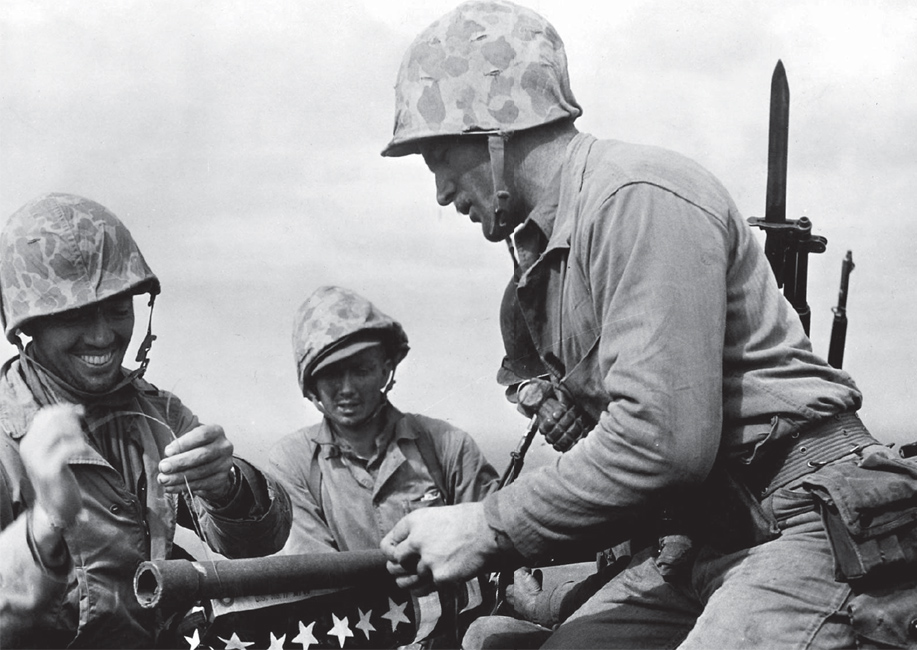CONTENTS
FOREWORD
Blazing Japanese installations send up huge puffs of white smoke as Roi Island, the Japanese airbase on Kwajalein Atoll in the Marshall Islands, rocks under the shattering impact of American bombs. Carrier-based US planes raided the island stronghold in preparation for landings by US Marine assault troops in early 1944. American forces captured Kwajalein during the continuing offensive in the Central Pacific. (Topfoto)
O N A HOT, MUGGY SUMMER day I strolled through the Punchbowl Cemetery on Oahu looking for a little shade to help preserve the creases melting out of my uniform. An old-timer leaning on a cane spotted me and patted a spot next to him on a marble bench. He was in his seventh or eighth decade of hard living and wearing an overseas cap that attested to his service as a Marine in the Pacific during World War II. Hell of a thing, he said sweeping an arthritic hand across the ranks of sparkling headstones. It was a dollar job on a dime budget all the way from Pearl Harbor to Okinawa. Everybody was worrying about Hitler and the Nazis.
His complaint was overstated but entirely understandable. In 1940 when American leadership was contemplating involvement in a world war for the second time in the 20th century, there was a tacit agreement that the initial effort would be against Axis powers in Europe. As most Americans at the time claimed some ancestry or familial descent from European nations, it was perhaps a natural reaction among war planners. And then the infamous Japanese attack on American forces and facilities in Hawaii on December 7, 1941, made a two-front war a reality. Pearl Harbor threw the American planners into a frenzy of shifting priorities. There were angry voices in Congress and across the country calling for an immediate counterstrike against the Japanese Empire but the leadership fell back on the default setting when the US declared war on Germany three days later.
There were practical as well as philosophical reasons for this: Americas striking power for what would clearly be a naval campaign against the Japanese in the Pacific had been badly damaged at Pearl Harbor. It would take time, money, and manpower to get those forces ready to begin a long and bloody struggle across vast expanses of ocean to stem the Japanese tide of victories in the Pacific and save Allied nations such as Australia and New Zealand from conquest. In the meantime, embattled American commanders such as General Douglas MacArthur in the Philippines and Admiral Chester Nimitz in Hawaii were forced to focus on survival as opposed to counterattack.
The tide began to turn in 1942 with the battle of the Coral Sea, the first naval engagement between opposing aircraft carrier task forces operating over the horizon from each other, and with the first American ground offensive at Guadalcanal in the Solomon Islands. Both battles were won on very tight margins and quickly demonstrated to Allied planners that war in the Pacific would be a brutal island-hopping affair focused on wrenching vital airfields from Japanese control. To support and supply the soldiers, sailors, and Marines fighting and dying on battlefields with often unpronounceable names, America and her Allies had to rely on a logistical tail that stretched across thousands of miles of ocean patrolled and controlled early in the war by marauding Japanese air and naval armadas.
Sailors aboard surface combatants and submarines and operating off aircraft carriers through the South and Central Pacific learned hard and costly lessons when they came up against a Japanese Navy schooled and experienced in night-time engagements. Infantry forces slugging it out with fanatical defenders on Pacific flyspecks like Tarawa, Saipan, and Peleliu mostly had to make do with whatever was at hand. Resupply was a long way off and requisitions often took months to fill. It was brutal in the extreme; and different in many respects from combat in the European Theater of Operations. Marines and soldiers in Pacific combat encountered an enemy that fought with an obsessive, no-quarter psychology that differed shockingly from Western approaches to warfare.
They got it done minus much of the fanfare and publicity that attended Allied advances and victories in other theaters of World War II. Among fighting men in the Pacific a sort of perverse pride often developed as they read newspaper clippings or heard radio broadcasts celebrating Allied campaigns in Europe following D-Day in 1944. Marines in the Pacific claimed to be Uncle Sams Misguided Children (USMC) and American Army survivors of the Japanese steamroller in the Philippines called themselves the Battling Bastards of Bataan, no mama, no papa, no Uncle Sam. Of course, none of them did what they did in the Pacific for glory or acclaim. That was the farthest thing from their minds as they battled through Leyte Gulf, over the bloody black sands of Iwo Jima and into the agonizing meat-grinder of combat on Okinawa and right up to the end of the war.
They just wanted to get the job done, to survive, to go home, and pick up where they left off when war interrupted their lives. Those of us who live free today have had 70 years to contemplate their service and sacrifice and weve not done enough to let the aging survivors know how vital it was to our way of life. Books like this one are dedicated to help correct that. Its the least we can do.
Captain Dale Dye USMC (Ret)
May 2011
Japanese Navy Type 99 carrier bombers (Val) prepare to take off from an aircraft carrier during the morning of December 7, 1941. The ship in the background is the carrier Soryu. (US Navy)
INTRODUCTION
Marines on Mount Suribachi, Iwo Jima, wiring the US flag onto a pole for the first flag raising at that site. It was later deemed not impressive enough and they found a better, larger flag and flag pole and that became the most famous picture to come out of the Pacific. (Tom Laemlein)
O N THE EVENING OF December 8, 1941, I sat huddled with my parents in front of our radio, listening to the first reports coming in of the Japanese attack on Pearl Harbor. I was five at the time but the impact of the news was so great that I can still recall it clearly. Although we were in Melbourne, Australia, and a long way from the scene of the American disaster, there were only meagre British, Dutch, and Australian forces between ourselves and the oncoming Imperial Japanese forces. Two days later we were shaken by news of the sinking off the coast of Malaya of the only British capital ships in regional waters, the Prince of Wales and the Repulse. We began building air raid shelters in our back-gardens and thinking about evacuation to the countryside. My father patrolled the streets at night as an Air Raid Precautions warden, enforcing the blackout of house and external lighting to deny any Japanese bombers an aiming mark.
How had this disaster for the United States and its friends and Allies happened in so short a time? Could the advance of the Japanese armed forces be halted? What would it take to hurl them back onto their home soil and force them to surrender? This very timely volume offers in depth answers to the second and third of these questions, but let me address some thoughts by way of reply to the first, with gratitude to my paternal grandfather who fought against the Boxer Rebellion in China, 190001, and in World War I, on each occasion with Japanese as allies. He had 40 years of naval experience between 1888 and 1928, and was a keen observer of strategic matters in the Pacific. In turn, he helped to develop my interest in these issues while I was in my teens.

